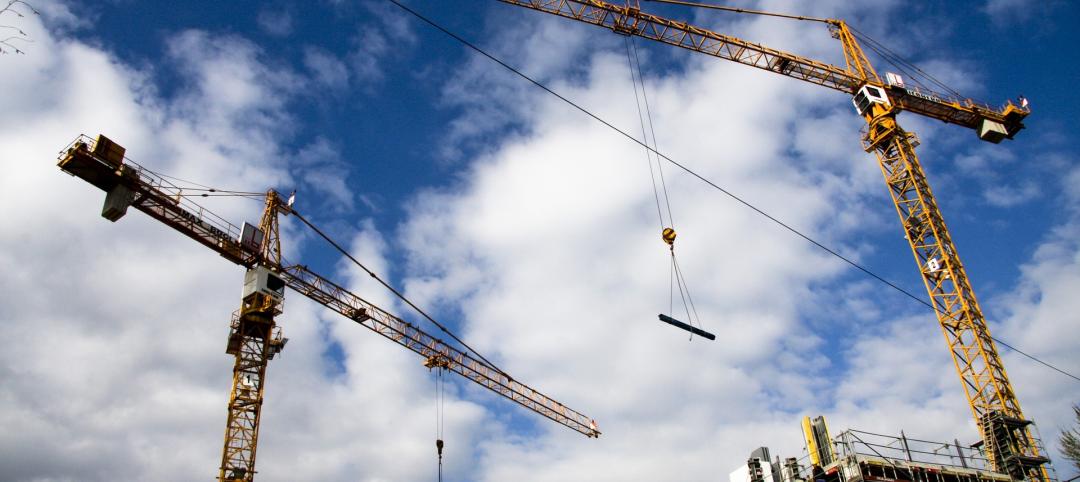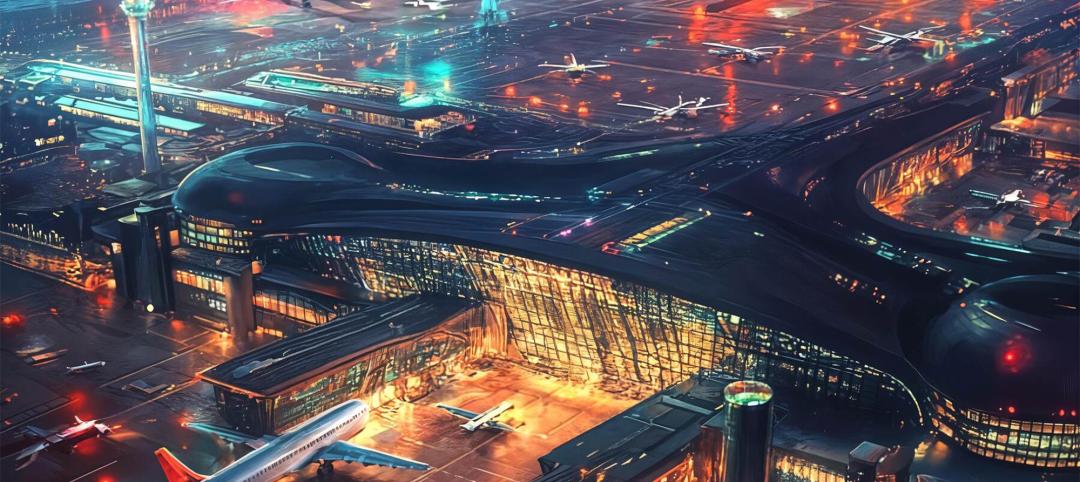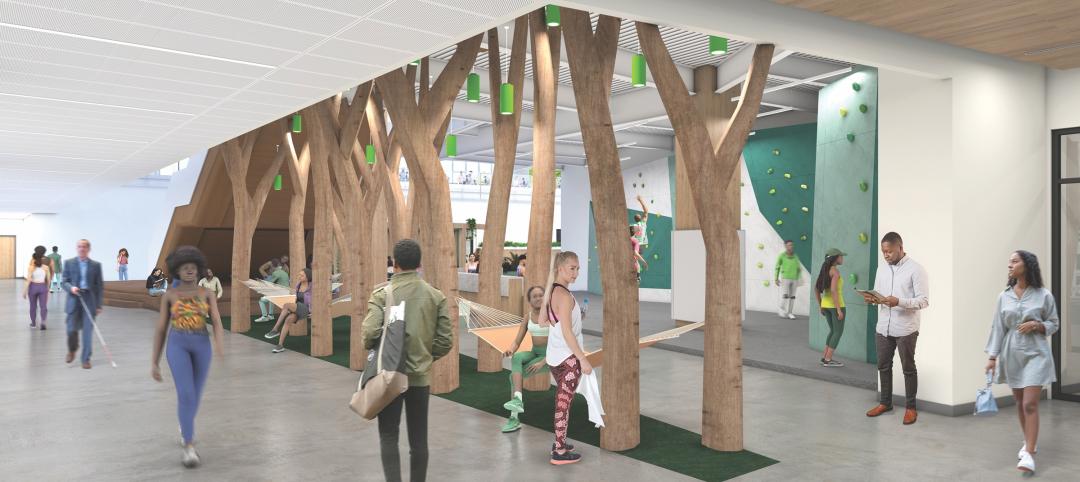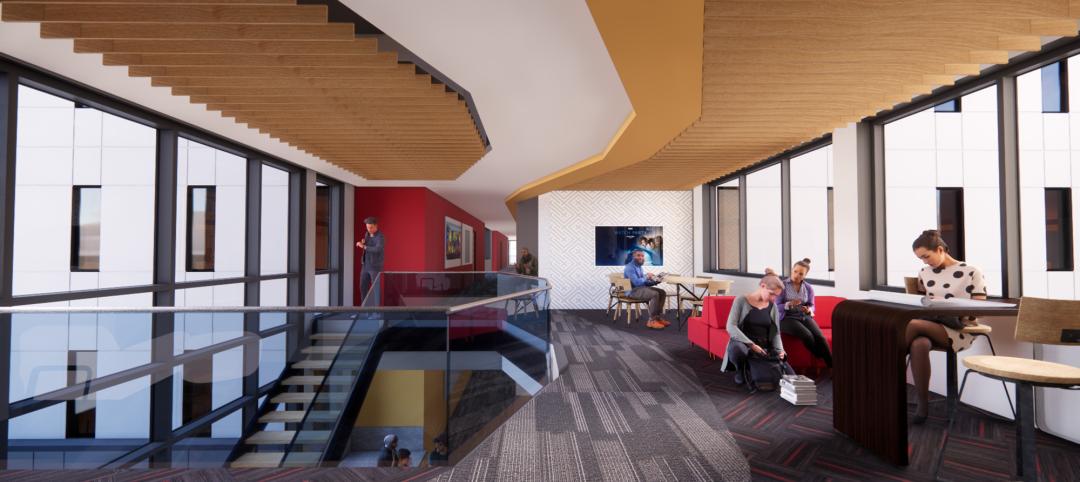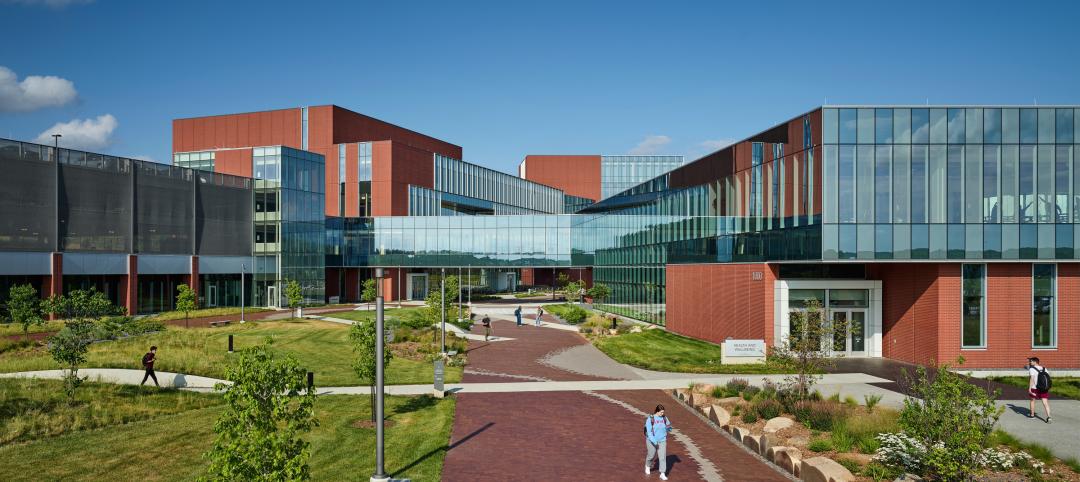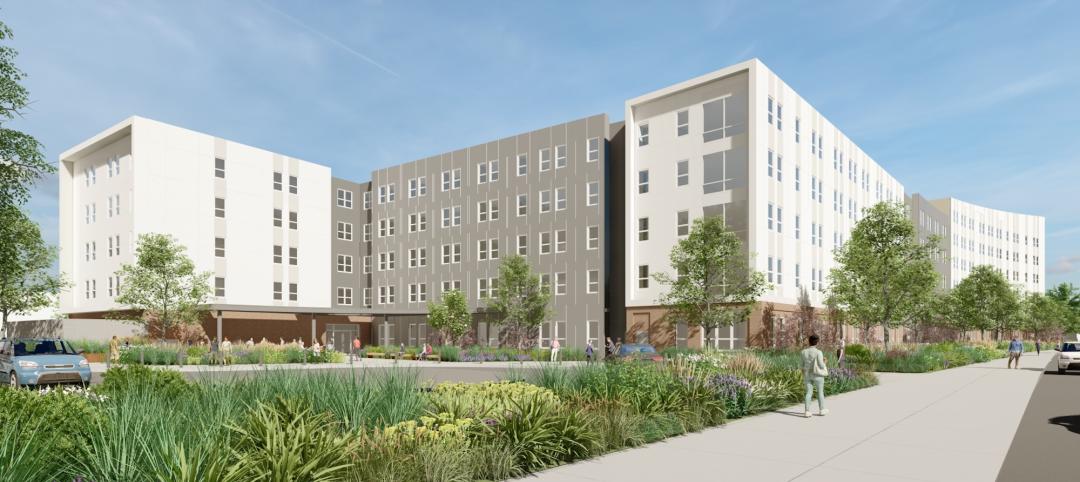Energy-efficient building design starts with the building envelope, but the building systems have a tremendous impact on energy use as well.
Commercial buildings consume a large portion of energy in the United States. The U.S. Energy Information Administration (EIA) says this is due to the increased use of existing electrical equipment and the introduction of new types of office equipment and telecommunication equipment. In fact, office equipment is one of the fastest-growing electrical uses in America, with 7% of total commercial energy use coming from these devices.
However, the energy consumption from office equipment is just a fraction of the total energy use in an office building. According to the EIA, 17% of a building’s overall energy use is for lighting, while 16% is for ventilation, 15% for cooling, and 2% for space heating. The EIA also found that elevator energy consumption represents about 5% of a building’s energy use—and that hydraulic-based elevator systems used in low-rise buildings are far less efficient than traction-based systems used in mid- and high-rise structures. (New elevator technology can reduce energy use by 30-40%.)
While overall energy consumption continues to increase in commercial buildings, owners and developers can make significant progress in reducing energy use by reevaluating and replacing older building systems, and specifying the latest energy-efficient systems for new builds.
Equipment standards of efficiency have been one of the most successful policies used by states and the federal government to reduce energy usage. The American Council for an Energy Efficient Economy (ACEEE) found that about 70% of potential new energy savings could come from updated water heaters, central air conditioners, heat pumps, electric motors, refrigerators, freezers, and commercial rooftop air conditioners.
Luckily, for building owners, advancements in HVAC systems, elevators, escalators and uninterruptible power supply (UPS) systems have resulted in modern building systems that improve performance, maximize reliability, and increase occupant comfort, while reducing energy usage. Let us look at some of the advancements in these building systems categories:
HVAC systems
Traditional HVAC systems are known for being imprecise and inefficient. To regulate the temperature of a space, hot and cold air need to be pumped into the spaces individually until the optimal temperature is reached. This not only leads to moments when spaces are too hot or too cold, it also requires more electricity to maintain ideal temperatures than newer variable refrigerant flow (VRF) technology. With VRF, hot and cold air can be piped in together, decreasing the amount of time and energy it takes to reach and maintain the proper temperature.
For the NoMad Los Angeles Hotel, the quiet and precise nature of the Mitsubishi Electric Trane US HVAC CITY MULTI Variable Refrigerant Flow system has been a pleasant surprise for guests. Ryan Bean, director of development with Sydell Group, the project’s developer, stated, “It’s funny because [the CITY MULTI VRF system] is so quiet that some of our guests think the heating and cooling system is not working at first because there’s no ‘kick on’ of the compressor or cold blast of air. After five minutes, our guests realize it’s on when they realize the room is comfortable. The simplicity of the Mitsubishi Electric technology has been great for our guests.”
Additionally, many traditional HVAC units provide the same airflow to multiple rooms in a building, regardless of occupancy and environmental factors like solar heat gain. Not only is energy wasted when unused rooms are being overly heated or cooled, but it can lead to different temperatures and levels of comfort throughout the building.
With modern systems, facility managers are able to pinpoint which rooms or zones within a space require temperature maintenance. This real-time, on-demand approach increases comfort for occupants and reduces overall costs for building owners and tenants. For a 19,000-square-foot building, that can lead to more than $5,000 in energy savings per year.
Elevators and escalators
Recent advancements in elevator and escalator technology are focused on reducing energy consumption, minimizing downtime and callbacks, and reaching new heights and speeds—all while providing a comfortable, safe, and secure experience for riders.
For example, Mitsubishi Electric has found a way to deliver a reliable, smooth ride with machine-room-less elevators while reducing energy use by up to 35%. When the elevator travels down with a heavy carload or up with a light carload, these actions are regenerative operations, meaning they are capable of generating electricity that can later power the car. The gearless traction works as a power generator by recycling heat that is usually generated and dissipated through use into the regenerative converter, which converts the heat back into electricity.
Destination dispatch systems maximize rider efficiency, while advanced door controls minimize door malfunctions—the most common source of elevator callbacks and downtime. These are just a few of the many ways owners can enhance the performance and success of their buildings with modern elevator and escalator systems.
Uninterruptible power supply
Critical for hospitals and data centers, where lost power can be detrimental to operations and health/safety, uninterruptible power supply (UPS) systems have been integrated into more buildings in recent years as companies and organizations become more reliant on digital devices.
Using proprietary double-conversion technology, UPS systems are designed to be up to 99% energy efficient. Rather than being a drain on energy, UPS systems are now quietly in the background of everyday tasks so they are there when needed.
As sustainability and energy efficiency become a larger conversation in the commercial real estate sector, a growing number of tenants and employees are asking what building owners and property managers are doing to reduce energy consumption. Creating an energy-efficient building from the inside out can help cut energy use, reduce overall costs, and recruit and retain tenants—all of which will have a tremendous impact on the owner’s bottom line.
For more information, visit BuildBetterTogether.com.
Related Stories
Construction Costs | Oct 16, 2024
Construction Crane Index: Most major markets’ crane counts increase or hold steady in third quarter
Rider Levett Bucknall’s (RLB’s) latest Crane Index and Quarterly Cost Report shows continued decreasing cost inflation and crane counts increasing or holding steady in 10 of the 14 major markets it surveyed. The national average increase in construction costs was 1.07%, the lowest it’s been in the last three years.
AEC Tech | Oct 16, 2024
How AI can augment the design visualization process
Blog author Tim Beecken, AIA, uses the design of an airport as a case-study for AI’s potential in design visualizations.
University Buildings | Oct 15, 2024
Recreation and wellness are bedfellows in new campus student centers
Student demands for amenities and services that address their emotional and mental wellbeing are impacting new development on college campuses that has led to recreation centers with wellness portfolios.
Higher Education | Oct 14, 2024
Higher education design for the first-gen college student
In this Design Collaborative blog, Yogen Solanki, Assoc. AIA, shares how architecture and design can help higher education institutions address some of the challenges faced by first-generation students.
Performing Arts Centers | Oct 10, 2024
Studio Gang's performing arts center for Hudson Valley Shakespeare breaks ground
A new permanent home for Hudson Valley Shakespeare, a professional non-profit theater company, recently broke ground in Garrison, N.Y. The Samuel H. Scripps Theater Center includes a 14,850 sf performance venue that will serve as a permanent home for the theater company known for its sweeping open-air productions of classics and new works.
Sustainable Design and Construction | Oct 10, 2024
Northglenn, a Denver suburb, opens a net zero, all-electric city hall with a mass timber structure
Northglenn, Colo., a Denver suburb, has opened the new Northglenn City Hall—a net zero, fully electric building with a mass timber structure. The 32,600-sf, $33.7 million building houses 60 city staffers. Designed by Anderson Mason Dale Architects, Northglenn City Hall is set to become the first municipal building in Colorado, and one of the first in the country, to achieve the Core certification: a green building rating system overseen by the International Living Future Institute.
3D Printing | Oct 9, 2024
3D-printed construction milestones take shape in Tennessee and Texas
Two notable 3D-printed projects mark milestones in the new construction technique of “printing” structures with specialized concrete. In Athens, Tennessee, Walmart hired Alquist 3D to build a 20-foot-high store expansion, one of the largest freestanding 3D-printed commercial concrete structures in the U.S. In Marfa, Texas, the world’s first 3D-printed hotel is under construction at an existing hotel and campground site.
University Buildings | Oct 9, 2024
Des Moines University Medicine and Health Sciences opens a new 88-acre campus
Des Moines University Medicine and Health Sciences has opened a new campus spanning 88 acres, over three times larger than its previous location. Designed by RDG Planning & Design and built by Turner Construction, the $260 million campus features technology-rich, flexible educational spaces that promote innovative teaching methods, expand research activity, and enhance clinical services. The campus includes four buildings connected with elevated pathways and totaling 382,000 sf.
Student Housing | Oct 9, 2024
University of Maryland begins work on $148 million graduate student housing development
The University of Maryland, in partnership with Campus Apartments and Mosaic Development Partners, has broken ground on a $148.75 million graduate student housing project on the university’s flagship College Park campus. The project will add 741 beds in 465 fully furnished apartments.
Healthcare Facilities | Oct 9, 2024
How healthcare operations inform design
Amanda Fisher, Communications Specialist, shares how BWBR's personalized approach and specialized experience can make a meaningful impact to healthcare facilities.


